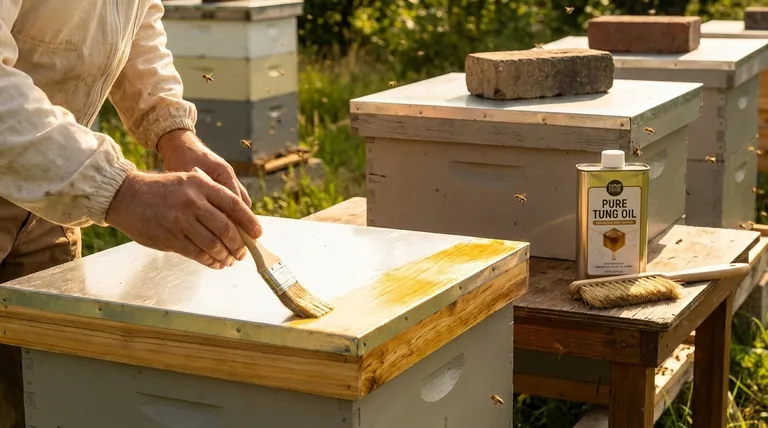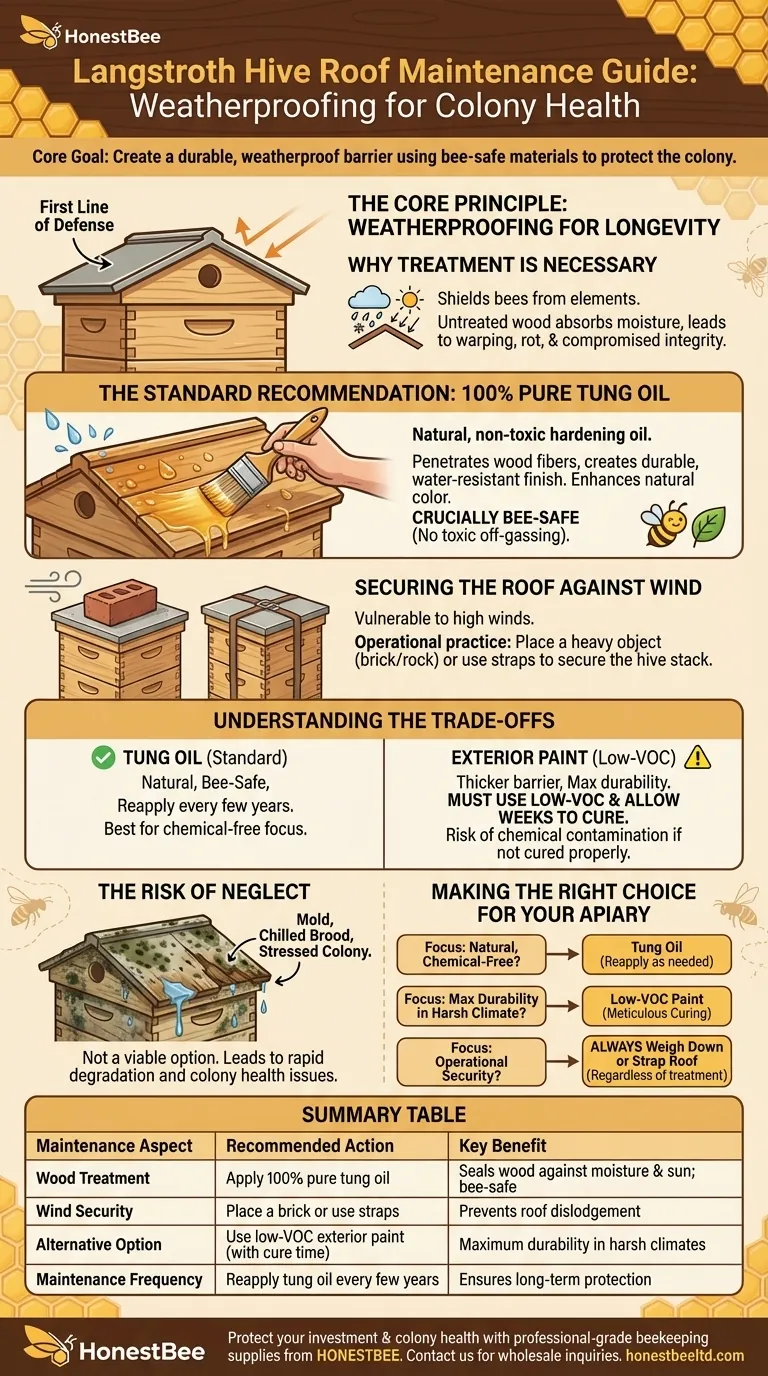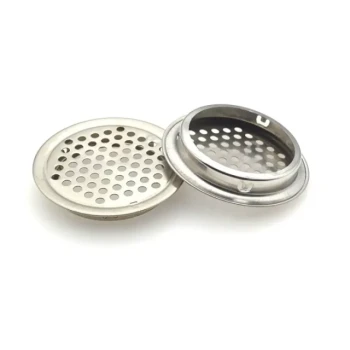To properly maintain a Langstroth hive roof, the primary recommendation is to treat the wood with a natural, protective finish. The most common and effective option is 100% pure tung oil, which seals the wood against moisture and sun damage without introducing harmful chemicals to the hive environment.
The core goal of hive roof maintenance is not just preserving the wood, but protecting the colony within. This involves creating a durable, weatherproof barrier using materials that are completely safe for your bees.

The Core Principle: Weatherproofing for Longevity
A hive roof is the colony's first and most important line of defense against the elements. Proper maintenance ensures it can fulfill this role for many seasons.
Why Treatment is Necessary
The roof shields the bees from rain, snow, and intense sun. Untreated wood will absorb moisture, leading to warping, rot, and cracks that compromise the hive's integrity and ability to thermoregulate.
The Standard Recommendation: Tung Oil
Tung oil is a natural, non-toxic hardening oil that penetrates wood fibers. It creates a durable, water-resistant finish that protects the roof while enhancing the natural color of the wood.
Crucially, it is bee-safe, unlike many chemical-based sealants, stains, or paints that can off-gas toxic fumes harmful to the colony.
Securing the Roof Against Wind
Langstroth roofs are designed for easy removal during inspections, which often means they are relatively lightweight. This makes them vulnerable to being dislodged by high winds.
A common operational practice is to place a heavy object, such as a brick or a large rock, on top of the roof. Alternatively, straps can be used to secure the entire hive stack, including the roof.
Understanding the Trade-offs
While tung oil is the standard, it's useful to understand it in context with other options.
Tung Oil vs. Exterior Paint
Applying a coat of high-quality, exterior latex paint is another common method. Paint can provide a thicker, more durable barrier against moisture and UV rays.
However, the primary trade-off is the potential for chemical contamination. If you choose to paint, you must use a low-VOC (Volatile Organic Compound) paint and allow it to cure and off-gas for several weeks in a well-ventilated area before placing it on an active hive.
The Risk of Neglect
Failing to treat and maintain the roof is not a viable option. An unprotected roof will quickly degrade, allowing moisture to seep into the hive, which can lead to mold, chilled brood, and a stressed, unhealthy colony.
Making the Right Choice for Your Apiary
Your approach should align with your beekeeping philosophy and local climate conditions.
- If your primary focus is natural, chemical-free beekeeping: Use 100% pure tung oil, reapplying a light coat every few years as needed.
- If your primary focus is maximum durability in a harsh climate: Consider a low-VOC exterior latex paint, but be meticulous about allowing it to fully cure before use.
- If your primary focus is operational security: Always weigh down or strap your roof, regardless of the surface treatment, to protect the hive from wind.
Properly maintaining your hive roof is a simple investment that pays significant dividends in colony health and hive longevity.
Summary Table:
| Maintenance Aspect | Recommended Action | Key Benefit |
|---|---|---|
| Wood Treatment | Apply 100% pure tung oil | Seals wood against moisture and sun; bee-safe |
| Wind Security | Place a brick or use straps | Prevents roof dislodgement |
| Alternative Option | Use low-VOC exterior paint (with cure time) | Maximum durability in harsh climates |
| Maintenance Frequency | Reapply tung oil every few years | Ensures long-term protection |
Protect your investment and ensure colony health with professional-grade beekeeping supplies from HONESTBEE. We supply commercial apiaries and distributors with durable, bee-safe equipment designed for longevity and ease of maintenance. Contact us today to discuss your wholesale needs and discover how our solutions can enhance your apiary's success.
Visual Guide

Related Products
- Telescopic Beehive Outer Cover Lid Roof with Galvanised Sheeting for Langstroth Hive and Beehive Outer Cover
- Professional Insulated Winter Hive Wrap for Beekeeping
- Inner Beehive Cover for Beekeeping Bee Hive Inner Cover
- Ergonomic Two Person Foldable Hive Lifter
- Professional Galvanized Hive Strap with Secure Locking Buckle for Beekeeping
People Also Ask
- What is a telescoping outer cover and what are its advantages? Maximize Hive Protection in Harsh Climates
- What are the features of the peaked roof in Langstroth hives? Superior Weather Protection & Stability
- How can garden hive lids be secured to prevent them from being blown off? | Reliable Methods for Apiary Protection
- What is the purpose of the inner and outer covers in a beehive? Essential for Hive Health & Management
- What is the purpose of a garden hive lid in beekeeping? Essential Protection for Your Colony's Health



















